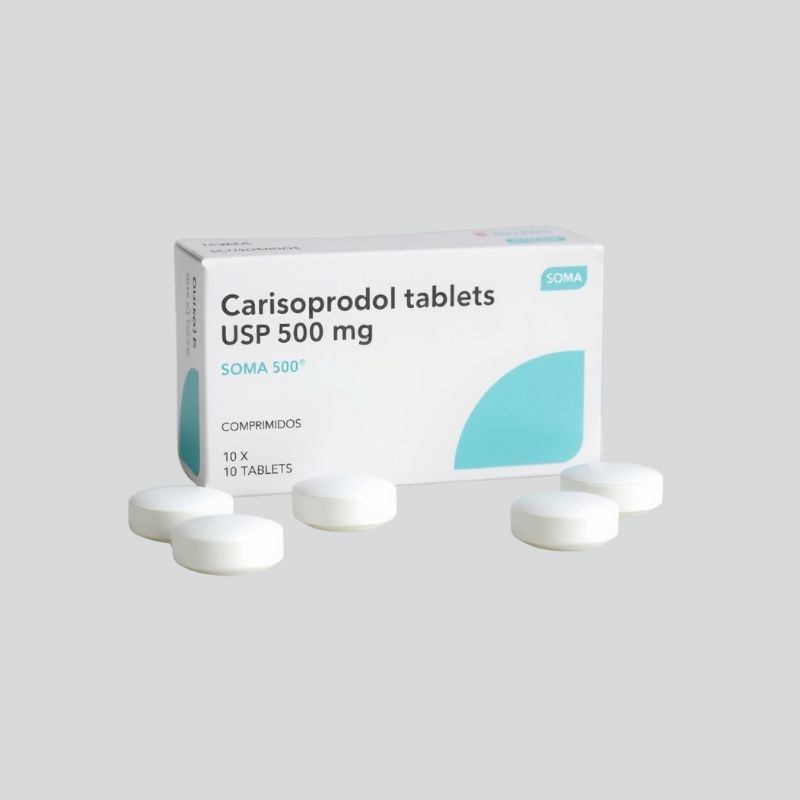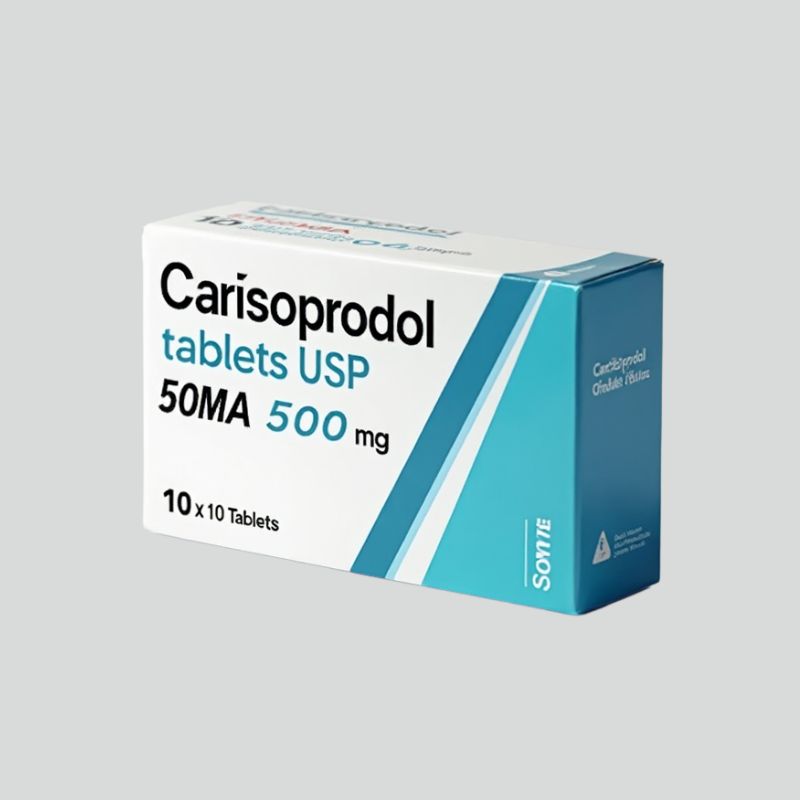Soma (Carisoprodol)
Generic Name: Carisoprodol
Brand Name: Soma
Drug Class: Skeletal Muscle Relaxant
Controlled Substance: Schedule IV (U.S.)
Available Strengths: 250 mg, 350 mg tablets
Route of Administration: Oral
Commonly Prescribed For: Short-term relief of acute musculoskeletal pain
Overview
People take Soma, a muscle relaxant that works in the brain and spinal cord, to ease the pain and discomfort of muscle injuries like sprains, strains, and back pain for a short time. It eases pain and helps muscles relax by interfering with the communication between nerves in the central nervous system (CNS). People typically use Soma in conjunction with rest, physical therapy, and other methods to address the physical causes of muscle pain. Soma can be abused, cause dependence, and make people sleepy, so it should only be used for two to three weeks.
Uses of Soma (Carisoprodol)
People are given Soma to treat:
- Acute spasms of muscles
- Back pain
- Headache
- sprains or strains of the joints
- musculoskeletal pain caused by an injury
- Tight muscles (not listed on the label) cause tension headaches.
Because it makes you sleepy and easy to become dependent on, it’s not meant to be used for long periods of time or chronic pain.
How Soma Works
The liver breaks down carisoprodol, the ingredient in Soma, into meprobamate, a chemical that calms and relaxes people. These chemicals, when put together:
- Stop the activity of neurons in the brain and spinal cord
- Stop the brain from getting pain signals
- Help people sleep and relax their muscles
- Lessen spasms in skeletal muscles
This two-part system helps relax muscles and ease pain without touching the muscle fibers directly.
Dosage and Administration
You can take Soma by mouth, with or without food, and it comes in tablet form. Always do what your healthcare provider tells you to do. Standard dose for adults:
- Most people take 250 mg to 350 mg three times a day and before bed.
- Maximum daily dose: Do not take more than four doses (1,400 mg) in a day.
How long the treatment lasts:
- It is not recommended for use after 2–3 weeks due to a lack of long-term data on its effectiveness and potential for dependency.
Note: If you’ve been using the drug for a long time, you should stop it gradually rather than all at once.
Onset and Duration of Action
- When the action starts: Usually within 30 minutes
- Duration: The effects last for about 4 to 6 hours.
The drug may make you sleepy and less alert, so be careful using it when you need to focus.
Benefits of Soma
- Quick relief from tight and painful muscles
- Can make it easier to move and range of motion
- Works well as part of a short-term treatment plan
- Lessens muscle spasms that you can’t stop
- Has a calming effect that may help with rest and recovery
Side Effects of Soma
Soma can help with muscle pain for a short time, but it may have some bad effects. These usually depend on the dose and may get worse with long-term use. Common Side Effects:
- Being sleepy
- Feeling dizzy or lightheaded
- Headache
- Toothache
- Medications for sleep
- Sickness
Serious Side Effects:
- Reactions to allergens (rash, itching, swelling)
- Having seizures
- Not enough blood flow
- Feeling Down
- Dependence on drugs or signs of withdrawal
- Problems with coordination (ataxia)
- Hypotension (especially when combined with other drugs that lower blood pressure)
Get medical help right away if you have any serious reactions, especially if you have trouble breathing or lose consciousness.
Warnings and Precautions
Notifications and Care
- Abuse and Dependence Risks: It is known that Soma can be abused, misused, and cause psychological dependence, especially in people who have a history of substance use disorder.
- Withdrawal: Stopping suddenly after long-term use can lead to withdrawal symptoms like insomnia, vomiting, tremors, and anxiety.
- Don’t drink alcohol. Mixing alcohol with Soma raises the risk of falling asleep, having trouble breathing, and overdosing.
- Mind-Blowing: Don’t drive or use heavy machinery while you’re on this drug.
- When you are pregnant: Pregnant women have not been the subject of much research. Use only if the pros are greater than the cons.
- Use with older people: The effects of sedatives and the risk of falling are stronger in older people.
- If you have liver or kidney problems, you may need to change your dose.
Drug Interactions
Soma can affect how other drugs work, especially those that slow down the central nervous system. Always let your doctor know about all the medicines you’re taking. Potential Interactions:
- Opioids raise the risk of breathing problems and death
- Benzodiazepines or sleep aids: effects that make you sleepier
- Alcohol: Makes depression in the brain worse
- Antidepressants, like SSRIs and tricyclics, may make side effects worse.
- Antihistamines: Can make you sleepier
Before mixing medicines, you should always talk to a pharmacist or doctor.
Soma vs. Other Muscle Relaxants
| Drug Name | Active Ingredient | Duration | Abuse Risk | Use Duration |
| Soma | Carisoprodol | Short | Moderate–High | Short-term only |
| Flexeril | Cyclobenzaprine | Long | Low | 2–3 weeks |
| Robaxin | Methocarbamol | Short | Low | Short-term |
| Baclofen | Baclofen | Long | Moderate | Chronic use in spasticity |
| Tizanidine | Tizanidine | Short | Low | Short-term |
Because it can be abused, soma isn’t usually the first drug that people try, but it may help with acute muscle pain when used properly.

